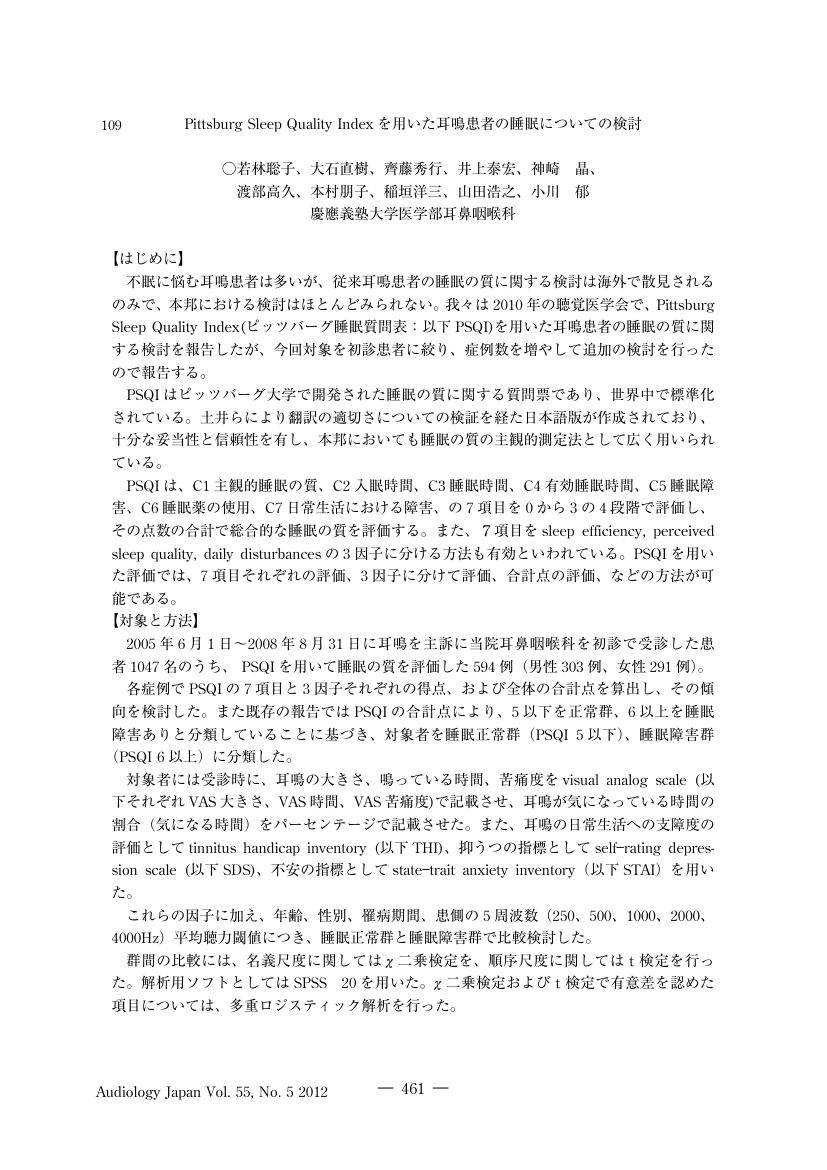- 著者
- 小林 聡子
- 出版者
- 新潟大学大学院現代社会文化研究科
- 雑誌
- 現代社会文化研究 (ISSN:13458485)
- 巻号頁・発行日
- no.74, pp.71-88, 2022-02
Ophelia, Shakespeare's heroine, has been painted in British and other countries from the 19th to the 20th century. The features of most of them are the water which will bury her and a glance which did not cross with the viewers. J.W. Waterhouse also painted Ophelia three times. In his pictures of Ophelia, Waterhouse did not paint the water, and the presence of Ophelia is more foregrounded than the water. Therefore, Ophelia leaves from the literary source in which she will drown, and is presented as the woman who has will. Moreover, Waterhouse painted Ophelia who communicates with viewers. One of the factors is a glance. Ophelia forces viewers to notice her by exchanging glances with each other or devote their attention to her by turning her eyes away from them and showing her concentration. As a result, Ophelia becomes a woman who has will and a sense of existence. While Ophelia is the existence who will drown by facing misfortune in literary sources, she becomes a woman who is living and acting in Waterhouse's paintings. Therefore, paintings of Ophelia by Waterhouse represent the praise of living.
- 著者
- 長橋 良隆 小林 聡子 奥平 敬元 吉川 周作 吉田 武義 里口 保文
- 出版者
- 特定非営利活動法人 日本火山学会
- 雑誌
- 日本火山学会講演予稿集 (ISSN:24335320)
- 巻号頁・発行日
- vol.2006, 2006
- 著者
- 若林 聡子 大石 直樹 齊藤 秀行 井上 泰宏 神崎 晶 渡部 高久 本村 朋子 稲垣 洋三 山田 浩之 小川 郁
- 出版者
- 一般社団法人 日本聴覚医学会
- 雑誌
- AUDIOLOGY JAPAN (ISSN:03038106)
- 巻号頁・発行日
- vol.55, no.5, pp.461-462, 2012 (Released:2013-12-05)
- 被引用文献数
- 1
1 0 0 0 OA 経頭蓋磁気刺激による耳鳴治療
1 0 0 0 IR 「日本」を題材とした協働学習の仕掛け : 教養教育における実践から考える
- 著者
- ガイタニディス ヤニス 小林 聡子 西住 奏子 和田 健 吉野 文
- 出版者
- 千葉大学国際教育センター
- 雑誌
- 国際教育 = International education (ISSN:18819451)
- 巻号頁・発行日
- no.9, pp.1-73, 2016-03
[要旨] 本稿は、筆者ら5名が共同で取り組んだ、参加者の言語的文化的多様性を前提とした協働学習に関する実践研究を報告するものである。「日本」を題材とする4つの学部生向け教養科目(「時事から日本を考える」、「現代日本の宗教と社会」、「バイリンガリズムと言語学習」、「異文化交流演習」)を取り上げ、担当教員がどのように学習の場を設定したか、またその結果どのような気づき、学びがあったかを談話データ、コメントシート、フォローアップインタビューなどをもとに分析した。本研究では、協働学習を学生間の対話のプロセスを重視する学習形態を表すものとして捉え、知識、言語、経験など参加者の多様性・差異を肯定的に見なすとともに、それによって生じる学習過程における葛藤にも注目した。「座談」、「協働論証」と名付けた対話の手法、対等な参加を促すための仕掛けの必要性と具体例を紹介するとともに、今後の課題について述べた。[Abstract] This paper is a report of a joint research project on collaborative learning in a multilingual andmulticultural class environment. The report is composed of four case-studies of liberal arts coursesat undergraduate level. Each course convener uses records of in-class student discussions, commentpapers and follow-up interviews to analyse how the learning locus set up in advance impacted onthe learning experiences and outcomes of the course participants.In this research project, collaborative learning is considered to be a form of learning that 1)emphasizes the process of student interaction, 2) takes an affirming stance towards student diversityin terms of linguistic, experiential and knowledge levels and differences, and 3) pays particularattention to the tensions arising from such diversity in the process of learning. Through specificexamples, the report discusses methods of interaction such as zadan (round-table conversation) orcollaborative argumentation and focuses on the necessity of introducing learning techniques thataim for student participation on even grounds.
- 著者
- 長橋 良隆 小林 聡子 奥平 敬元 吉川 周作 吉田 武義 里口 保文
- 出版者
- 特定非営利活動法人 日本火山学会
- 雑誌
- 日本火山学会講演予稿集
- 巻号頁・発行日
- vol.2006, 2006
- 著者
- 長橋 良隆 小林 聡子 奥平 敬元 吉川周作 吉田 武義 里口 保文
- 出版者
- 一般社団法人 日本地質学会
- 雑誌
- 日本地質学会学術大会講演要旨
- 巻号頁・発行日
- vol.2005, 2005
- 著者
- 長橋 良隆 小林 聡子 奥平 敬元 吉川周作 吉田 武義 里口 保文
- 出版者
- 一般社団法人 日本地質学会
- 雑誌
- 日本地質学会学術大会講演要旨 (ISSN:13483935)
- 巻号頁・発行日
- vol.2005, 2005
1 0 0 0 OA 永久前歯に発現した切歯結節(タロンカスプ)について
- 著者
- 新居 智恵 田中 庄二 鈴木 昭 村上 幸生 小林 聡子 秋田 紗世子 利根川 茜 渡部 茂 町野 守
- 出版者
- 一般財団法人 日本小児歯科学会
- 雑誌
- 小児歯科学雑誌 (ISSN:05831199)
- 巻号頁・発行日
- vol.47, no.4, pp.628-633, 2009-09-25 (Released:2015-03-11)
- 参考文献数
- 30
切歯結節は,切歯の基底結節が隆起した比較的稀な歯科的な異常である。われわれは,永久前歯における切歯結節の6 例を経験した。3 例は,上顎側切歯に,1 例は両側の上顎中切歯にみられた。1 例は,稀な下顎に,さらに,1 例は下顎側切歯と下顎犬歯の癒合歯にみられた。 結節の形態は,凸様突起物はたはT 字状突起物であった。処置は,レジン充塡にて結節の補強を行い経過観察とした。咬合に関係していない症例では経過観察とした。 永久前歯における切歯結節について,文献的考察を加えて報告した。
1 0 0 0 長寿地域高齢者の心理的特性 : 性格5因子モデルによる比較研究
- 著者
- 鈴木 征男 崎原 盛造 秋坂 真史 柏木 繁男 芳賀 博 兪 今 當銘 貴世美 林 聡子
- 出版者
- 一般社団法人日本心身医学会
- 雑誌
- 心身医学 (ISSN:03850307)
- 巻号頁・発行日
- vol.40, no.7, pp.525-532, 2000-10-01
- 被引用文献数
- 2
長寿県である沖縄の高齢者の心理的特性を把握するために, 性格5因子モデル(FFM:Five Factor Model)に基づく形容詞評定尺度を作成し, 全国の65歳以上の高齢者609名と沖縄の高齢者を比較検討した.その結果, 沖縄県高齢者の心理的特性として, OpennessとExtraversionで対照群より低く, Agreeablenessで高い結果が得られた.Agreeablenessが高いことは, 沖縄の高齢者が地域社会と強い結びつきを表していることと一致している.また, Conscientiousnessに関しては沖縄の得点は対照群よりも低かったが, これはおうようで, のんびりしているといわれている沖縄人の性格と一致している.なお, NeuroticismおよびOpennessに関しては, 両群に有意な差はみられなかった.

